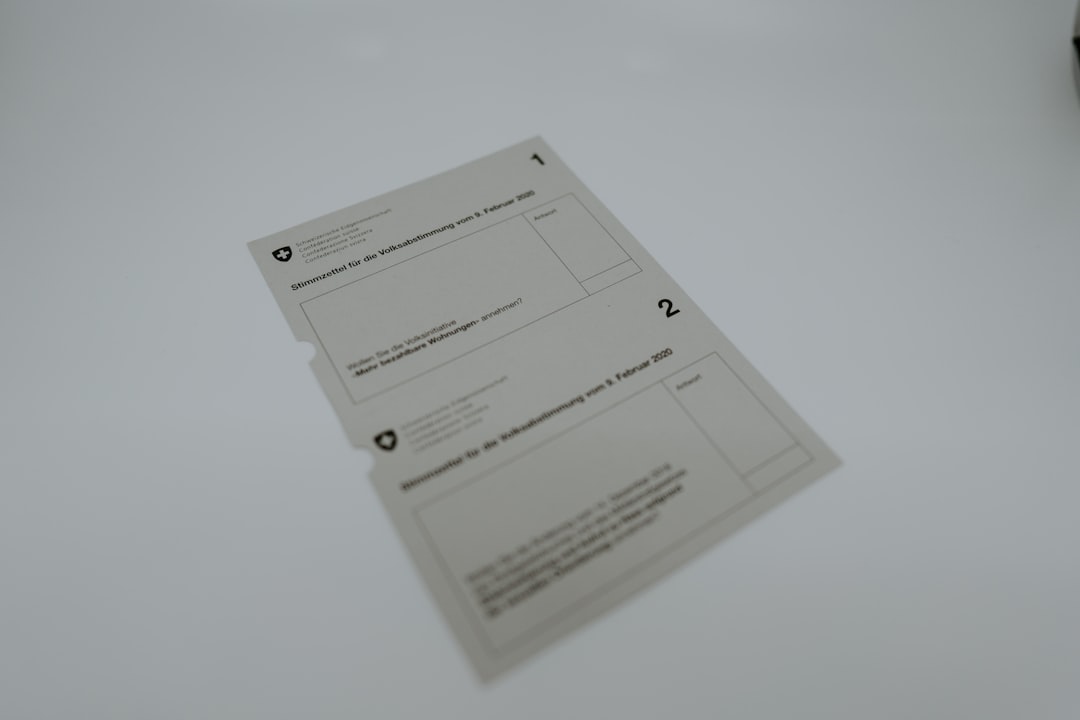

Engage prospects with a scan and streamline customer engagement with FREE QR code marketing tools by Sona – no strings attached!
Create a Free QR CodeFree consultation

No commitment

Engage prospects with a scan and streamline customer engagement with FREE QR code marketing tools by Sona – no strings attached!
Create a Free QR CodeFree consultation

No commitment
Custom imprinting services are a critical vehicle for businesses seeking to boost brand visibility and foster real connections with audiences through distinctive, branded collateral. As physical and digital interactions blend, a persistent challenge emerges: simply imprinting logos or offers is not enough. What truly matters is converting offline interest into actionable leads. Traditional print assets rarely provide insight into who is engaging or why, often leaving high-value prospects untracked and key opportunities lost to anonymity.
QR codes have emerged as a pivotal solution, transforming every business card, flyer, or package into a measurable gateway from offline curiosity to online conversion. For companies in custom imprinting services, QR codes streamline data collection and customer engagement, reducing reliance on manual processes like paper sign-up sheets or static brochures. More importantly, they help move beyond guesswork, allowing identification not just of the volume, but the quality and intent behind each interaction.
By embedding QR code marketing and personalized QR code solutions within custom imprinting strategies, traditional branded assets become dynamic lead generators and actionable touchpoints. This evolution improves brand visibility while addressing the industry's core frustrations: missed high-value prospects, limited insight into audience behavior, and the inability to track genuine ROI on physical campaigns. With the right planning and tools, QR codes help imprinting leaders thread a continuous, measurable journey from first touch to closed revenue.

Many custom imprinting providers struggle to measure the effectiveness of physical assets and often miss out on leads when interested prospects remain anonymous. QR codes bridge the physical-to-digital gap, ensuring engagement with printed materials can be tracked and acted upon. When embedded intentionally, codes help you capture contact details, direct buyers to curated experiences, and attribute revenue back to specific assets and placements.
This approach replaces outdated analog processes that impede speed and accuracy. Printed brochures can supplement scannable lookbooks or product configurators. Paper forms and clipboards give way to mobile-optimized forms like Google Forms QR that auto-complete and sync to CRM records. Manual giveaway entries or fishbowl business cards become instant profile captures that trigger automated sequences. Even static promo codes can become dynamic, trackable offers that segment audiences by campaign, location, and time.
By automating scan tracking and CRM integration, modern platforms reduce manual data entry and help surface prospects who otherwise might never be identified. Sona QR supports every stage of this workflow. From creation and design to measurement and attribution, you can convert offline interactions into qualified opportunities and measurable revenue. Start creating QR codes for free.

A longstanding hurdle in custom imprinting is proving which offline assets generate real business outcomes. Teams invest in business cards, catalogs, hang tags, packaging, and signage, only to guess at which items perform. Traditional analytics are often too high level, resulting in incomplete or outdated account data that hinders both segmentation and personalized targeting. It becomes difficult to justify spend on specific media and nearly impossible to scale the best performers.
QR codes deliver granular, actionable data on how, when, and by whom every printed asset is engaged. Scan data includes time stamps, device types, and locations, which reveal context about use. For example, scans from event badges during morning keynote hours can inform staffing, while scans from packaging after delivery can support onboarding sequences or upsell offers. Dynamic QR codes are especially valuable because they allow content changes post-print. You can react to trends, test different landing pages, and update offers without waste.
Business leaders can use this data for sharper targeting, closing the loop between offline visibility and online conversion. The result is less guessing and more informed investment in what truly moves the needle.

Custom imprinting operations often serve many audiences across multiple products. A smart QR implementation accommodates these variations with formats that match the task at hand. The right format reduces friction for users and captures the signals you need to optimize campaigns later. Selecting the best destination for each scan is just as important as the visual design.
For imprinting teams, formats that typically drive results include links to web pages and forms for quotes or custom orders, vCards for instant contact exchange at events, and review or feedback links to capture sentiment shortly after delivery. App download codes can also be useful if you offer a client portal for proof approvals or reorder management, with device-aware routing to the right app store.
Dynamic (editable) codes are invaluable when offers or destinations may change, or when you want to track by asset, segment, or location. Static codes fit single-use or evergreen contexts like a care instruction page for a garment. Platforms like Sona QR support centralized creation and editing across all formats, so no opportunity slips through the cracks due to fragmented data or outdated links.

A common frustration in custom imprinting is underutilized high-traffic touchpoints, where physical assets generate attention but not actionable leads. You already print items that customers touch and see daily. With QR codes, those surfaces become conversion engines that shorten the distance between curiosity and action.
Prioritize placements where intent is naturally high and users have a moment to engage. At events, busy professionals want information quickly and prefer not to carry stacks of collateral. On packaging, customers are primed to learn more, reorder, or register products. At the point of sale, shoppers are receptive to loyalty programs and add-ons. Focus on visibility, accessibility, and a direct benefit for scanning.
By closing the gap between interested-but-anonymous prospects and digital channels, QR codes enable systematic nurturing, retargeting, and upselling. Over time, you will build a richer profile of who engages, what they value, and which offers convert.
Business leaders in custom imprinting often lament that even when potential buyers express interest at expos, on packaging, or via apparel tags, there is no frictionless way to convert that curiosity into actionable follow-ups. QR codes solve this by supplying clear next steps, capturing intent data, and triggering automated workflows tailored to context. Done well, they turn routine collateral into persistent growth channels.
Below are practical use cases mapped to common customer interactions. Each example shows how placement and destination combine to move someone from interest to action while creating a measurable signal for attribution.
These use cases create measurable outcomes such as higher scan-to-form conversion, improved reorder velocity, and elevated review volume. By linking each with dynamic codes, you can refine offers on the fly and attribute revenue to specific assets.
One persistent industry frustration is that many offline interactions remain anonymous, making it hard to build segmented audiences and retarget meaningfully. QR scans, however, are high-signal events. They tell you not only who engaged, but also where and when. This context is invaluable for segmenting audiences based on intent, journey stage, and product interest.
Imprinting businesses typically sell to varied groups such as corporate buyers, event organizers, resellers, and end consumers. Each segment responds to different offers and messages. By deploying multiple codes across touchpoints, you can automatically build distinct audiences, then craft follow-ups that feel timely and relevant to each group.
With Sona QR, each code becomes a smart entry point into your funnel. Sona syncs scan data automatically and updates contact records in real time, helping you retarget based on observed behavior rather than assumptions and ensuring prospects progress smoothly toward conversion.
A central challenge in custom imprinting is orchestrating seamless multi-channel campaigns where offline and online efforts inform each other rather than running in silos. QR codes provide a consistent connective tissue across print, events, and digital channels, enabling real-time engagement and richer data collection everywhere your brand appears.
By embedding QR codes at strategic points, you can attribute offline-to-online conversions with precision. You will learn which physical assets actually drive action and ensure that follow-up campaigns are informed by up-to-date scan data. This reduces wasted spend on underperforming media and lets you double down on what resonates with each segment. For measurement context, review Sona’s multi-touch models.
QR codes serve as the offline onramp to your digital marketing engine. With a centralized platform like Sona QR, you can manage all your codes, monitor performance across channels, and sync scan data back to your CRM and ad platforms. This creates a single source of truth for measuring the impact of physical assets on pipeline and revenue.
Clarify what success looks like before you design anything. If your primary goal is to book demos from a trade show, your code should drive to a mobile-friendly demo scheduler with pre-filled event data. If you want to grow product reviews, your code should land on a frictionless review form with a visible incentive.
Tie each goal to measurable metrics such as scan volume, scan-to-form completion rate, and conversion to qualified opportunity. This sets expectations for creative, placement, and follow-up and makes it easier to assess whether to scale or pivot after launch.
Choose static or dynamic codes based on your needs. Static codes suit evergreen resources like garment care pages. Dynamic codes let you update destinations without reprinting, run A/B tests on offers, and capture detailed analytics such as geolocation and device type.
For campaigns that require attribution, retargeting, or ongoing optimization, dynamic codes are the right choice. Platforms like Sona QR allow you to manage both static and dynamic codes in one dashboard and keep campaign-level reporting organized.
Incorporate your brand colors, add a protective frame, and test contrast for legibility. Place a concise CTA such as Scan for show pricing or Scan to book your demo directly beneath the code. Ensure the target size is at least 1 by 1 inch on small items and proportionally larger at a distance.
Test scan performance on multiple devices and under varied lighting. Avoid placing codes on heavily textured or curved surfaces that cause glare or distortion. If necessary, use a flat tag or label on those items to protect scannability.
Match placements to audience behavior. Badges and lanyards should place codes at chest height and upright. Packaging inserts should place codes on top flaps or first-open panels. Direct mail should position codes away from folds with white space to improve visibility.
Use unique dynamic codes per channel or asset variant so you can attribute performance accurately. Label codes clearly in your dashboard by name, campaign, and placement to maintain a clean analytics structure.
Many marketing teams struggle to turn QR plans into measurable campaigns due to scattered workflows and imprecise tracking. A robust checklist aligns goals, formats, creative, placements, and analytics into one cohesive plan that sales and marketing can execute together.
Tracking should not stop at the scan. Use UTM parameters and event tracking to follow the visitor path through form submissions, content views, and conversions. Connect scan events to contact records in your CRM to inform lead scoring and sales prioritization.
During the campaign, watch performance by placement and time. If booth signage outperforms brochures, shift budget and staff attention accordingly. If scan-to-form completion lags, test a shorter form or a more compelling CTA. With Sona QR, you can make these adjustments quickly and measure the impact immediately.
For many imprinting businesses, the inability to see which prospects engage with their physical assets leads to wasted spend and missed upsell opportunities. Tracking every scan including channel, timing, and follow-up is now a necessity. Without it, you cannot prove impact, learn from results, or scale the best ideas. With it, you can build a clear bridge from physical impressions to digital outcomes and revenue.
Integrated analytics help teams understand not only how many people scan, but also which placements generate quality engagement, what content resonates, and where drop-offs occur. Layering scan data into your CRM elevates visibility from marketing to sales, allowing for timely outreach, better qualification, and more meaningful personalization. This reduces guesswork and helps your brand demonstrate value at every step.
The result is clarity. Sona QR captures real-world engagement. Sona.com connects that engagement to outcomes you care about, closing the loop from scan to revenue and making QR codes an integral part of your performance marketing strategy.
Custom imprinting teams often encounter familiar challenges: unclear campaign impact, scattered data, and low scan rates. The solution is a combination of better planning, simple user experience, and disciplined measurement. QR codes perform best when the benefit is obvious, the landing experience is fast, and the follow-up is instant.
Choose best practices that align to your most common media and buyer journeys. If events are your engine, focus on badges, booth signage, and swag. If packaging is your recurring touchpoint, invest in inserts with clear offers and feedback loops. In all cases, make scanning the easiest path to value.
Creative deployment examples include adding QR codes to loyalty punch cards for coffee or campus stores you supply, linking to member-only offers and tracking frequency, and printing QR codes on invoices that open a one-click reorder page, making it effortless for buyers to replenish supplies.

Many custom imprinting firms wonder whether QR code investments will deliver real returns, especially when previous efforts offered limited visibility into revenue impact. Success stories across the industry show that when QR codes are integrated thoughtfully with goals, creative, and automation, they consistently drive measurable results.
A branded merchandise company rolled out dynamic QR codes on apparel hang tags at a major trade show. Each code linked to a mobile lookbook with a short form for pricing. The team captured contact details from hundreds of previously anonymous visitors and saw a 35 percent lift in post-event leads. Because the codes were unique to each product line, the company also learned which items drew the most interest and optimized their follow-up accordingly.
Another imprinting provider designed personalized awards featuring QR codes that linked to shareable social stories. Recipients scanned during the ceremony to unlock a custom landing page with their photo, award details, and a prompt to share to social media. The program turned honorees into brand advocates, generated inbound inquiries for future events, and created trackable traffic spikes that tied directly to referral bookings. In a separate initiative, adding QR codes to direct mail catalogs increased digital engagement significantly. Personalized offers and concierge scheduling on the destination page boosted scan-to-meeting conversions within key accounts and revealed which catalog sections captured the most attention.
These outcomes illustrate the power of QR code strategy. When you align placement, messaging, and measurement, even traditional collateral becomes a reliable source of growth and insight.
Production teams and marketers frequently face hurdles such as unclear scan instructions, poor code placement, or mismatched creative. The key is to treat QR codes as both design elements and conversion levers. Planning for scannability, clarity, and relevance during prepress prevents last-minute compromises and preserves your ability to measure impact accurately.
Testing under real conditions is essential. Scanning a proof in a well-lit office is not the same as scanning a badge in a crowded hall or a poster through a window at night. Consider distance, angle, glare, and device diversity when approving placements. Collaborate closely with printers and designers so that creative intent aligns with practical execution.
Common pitfalls include burying codes in cluttered designs, using low-contrast colors that compromise readability, sending users to generic homepages without context, and failing to measure beyond scan counts. Avoid these traps by pairing clear CTAs with tailored destinations and a plan for post-scan actions. That is how you turn scans into conversions, not just clicks.
QR codes have rapidly evolved from a novelty to a strategic necessity in custom imprinting services, acting as conduits that turn branded assets into measurable engagement channels. By pairing distinctive, scannable codes with granular analytics and up-to-date customer profiles, businesses not only bridge the physical-digital divide but also gain the insight needed to retarget effectively and reduce lost opportunity.
Integrated thoughtfully, QR codes transform every piece of merchandise, collateral, or packaging into actionable feedback and conversion points. This helps teams overcome persistent challenges like missing high-value prospects, incomplete data, and unclear ROI. With modern approaches making real-time audience segmentation and follow-up seamless, custom imprinting leaders can confidently tie offline activations to bottom-line impact, positioning their brand as both innovative and results-driven in a competitive landscape.
QR codes have transformed the custom imprinting services industry from traditional branding to interactive, data-driven marketing channels. Whether it’s enhancing customer acquisition, elevating personalized brand experiences, or enabling precise tracking of campaign success, QR codes turn static promotional items into powerful tools that engage and convert. Imagine knowing exactly which custom products spark the most interest—and being able to optimize your campaigns instantly without costly reprints.
With Sona QR, you gain the ability to create dynamic, trackable QR codes in seconds, update your imprinting campaigns on the fly, and connect every scan directly to measurable revenue outcomes. No more guesswork, just actionable insights that maximize the impact of every custom-printed asset. Start for free with Sona QR today and transform your custom imprinting strategy into a conversion-driving powerhouse.
Custom imprinting services enhance brand visibility by creating distinctive branded collateral that fosters real connections and transforms physical assets into measurable lead generators with actionable customer engagement.
Custom QR codes provide measurable data on offline engagement, enable seamless offline-to-online conversions, streamline data collection, support dynamic content updates, automate follow-ups, and improve ROI tracking for marketing campaigns.
Select a custom imprinting service that integrates dynamic QR code technology, offers centralized management and analytics, supports CRM integration, and provides tailored solutions aligned with your campaign goals and audience segments.
You can integrate QR codes into event badges, apparel hang tags, packaging inserts, catalogs, invoices, direct mail, point-of-sale materials, storefront signage, and digital signage to drive specific actions like demo bookings, reorder requests, feedback collection, and loyalty sign-ups.
Measure effectiveness by tracking scan data including time, location, device type, and campaign source, monitoring scan-to-action conversion rates, syncing data with CRM systems for lead nurturing, and attributing revenue through multi-touch analytics.
Use Sona QR's trackable codes to improve customer acquisition and engagement today.
Create Your FREE Trackable QR Code in SecondsJoin results-focused teams combining Sona Platform automation with advanced Google Ads strategies to scale lead generation

Connect your existing CRM

Free Account Enrichment

No setup fees
No commitment required

Free consultation

Get a custom Google Ads roadmap for your business






Launch campaigns that generate qualified leads in 30 days or less.
